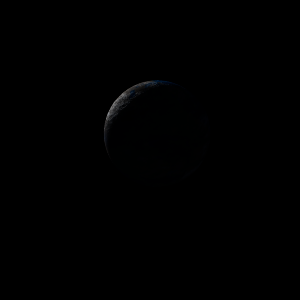|
|
Space Astro
|
Info for exoplanet "Gegakyo Be"
| Scientific (actual) data |
|---|
| Name | Kepler-1670 b |
| Planet status | Confirmed |
| Radius | 0.299 |
| Orbital period | 20.4998 |
| Semi major axis | 0.151 |
| Inclination | 88.81 |
| Discovered | 2020 |
| Updated | 2021-02-05 |
| Tzero tr | 2454960 |
| Impact parameter | 0.4285 |
| Temperature (kelvin) | 734 |
| Publication | Announced on a website |
| Detection type | Primary Transit |
| Alternate names | 2MASS J19211836+4307186 b, K01705.01, KIC 7522911 b, KOI-1705 b, KOI-1705.01, WISE J192118.36+430718.1 b |
| Star name | Kepler-1670 |
| Right ascension | 290.33° |
| Declination | 43.12° |
| Mag i | 15.259 |
| Mag j | 14.365 |
| Mag h | 13.946 |
| Mag k | 14.019 |
| Star distance | 2198.41 |
| Star metallicity | -0.08 |
| Star mass | 1.086 |
| Star radius | 1.57 |
| Star temperature | 5766 |
| Star alternate names | 7522911, 2MASS J19211836+4307186, KIC 7522911, KOI-1705, WISE J192118.36+430718.1 |
| Wikipedia article | Kepler-1670 b |
Back
| |
| Fictional info (?) |
|---|
| Suggested name | Gegakyo Be |
| Planet type | Planet |
|
| Atmosphere | Hydrogen chloride | 46% |
| Nitric oxide | 25% |
| Water vapor | 17% |
| Carbonyl sulfide | 5.2% |
| Ozone | 4.7% |
| Helium | 0.79% |
| Krypton | 0.29% |
| Neon | 0.23% |
| Sulfur dioxide | 0.081% |
| Argon | 0.072% |
| Ammonium hydrosulfide (NH4SH) | 0.022% |
| Xenon | 0.019% |
| Ethane | 0.0012% |
| Formaldehyde | 2.7E-5% |
| Carbon monoxide | 1.0E-6% |
| Atmospheric pressure | 0.009 bar |
 |
| No known satellites |
| Google search for Gegakyo be |
|
Website by Joachim Michaelis
|
|
|
|